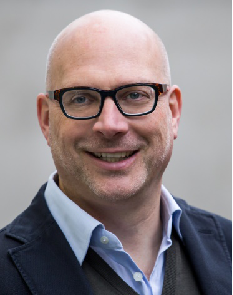
报告题目:Interfacing DNA- and Supercharged Polypeptide Precision Polymers with Living Systems
报告人简介:
报告摘要:
主要文献:
[1] Lutz JF, Lehn JM, Meijer EW, Matyjaszewski K: Nat. Rev. Mater. 2016, 1, 16024.
报告时间:2019年7月27日(周六)下午14:30
报告地点:高新大厦15楼会议室2
报告人:Dr. Andreas Herrmann (DWI – Leibniz Institute for Interactive Materials, Aachen;RWTH Aachen University, Germany)
报告人简介:
Andreas Herrmann studied chemistry at the University of Mainz (Germany). From 1997 to 2000 he pursued his graduate studies at the Max Planck Institute for Polymer Research in Mainz in the group of Prof. Klaus Müllen. Then he worked as a consultant for Roland Berger Management Consultants in Munich (2001). In the years 2002 and 2003 he returned to academia as a postdoctoral fellow working on protein engineering with Prof. Don Hilvert at the Swiss Federal Institute of Technology, Zurich. In 2004 he was appointed as a head of a junior research group at the Max Planck Institute for Polymer Research.
From 2007 to 2017 he held a position as full professor at the Zernike Institute for Advanced Materials at the University of Groningen, The Netherlands, where he headed the chair for Polymer Chemistry and Bioengineering. Since June 2017 he is scientific board member of the Leibniz Institute for Interactive Materials in Aachen, Germany, and fills a position as full professor at RWTH Aachen University for Macromolecular Materials and Systems.
The Herrmann group investigates engineered biomacromolecules and bioorganic hybrid materials for biomedical and technological applications as well as the construction of proto-cells. The team is experienced in the fabrication of nucleic acids by solid phase synthesis, solution processes and molecular biology methods. Regarding the production of proteins, the Herrmann group generates unfolded supercharged polypeptides and their fusion proteins by genetic engineering. Furthermore, the group has a strong background in bioconjugation protocols especially for generating hybrids of biomolecules and organic structures. The resulting compounds are processed to form larger soft matter superstructures with nanoscopic and mesoscopic order. Examples are functional micelles, liposomes and lyotropic or thermotropic liquid crystals.
报告摘要:
In recent years, great progress has been achieved in fabricating sequence controlled synthetic polymers that self-assemble into well-defined architectures, which in turn can be translated into specific functions.[1] Nucleic acid hybrid structures and polypeptides are exquisite sequence controlled building blocks to generate superstructures that open exciting opportunities in the area of biomedicine.[2,3] The interfacing of DNA hybrids with biological systems is greatly facilitated by the easy chemical functionalization of DNA, solid phase synthesis and the programmable Watson-Crick base pair formation. Our group developed new DNA amphiphiles by covalently attaching hydrophobic units to nucleic acids.[4] The resulting amphiphiles can pierce into phospholipid membranes allowing to construct functional vesicles[5] and enable programmable uptake into cells.[6] The same concept was successfully realized for the encoding of live zebra fish with sequence information[7] or was exploited in the context of drug delivery to treat eye infections demonstrating functionality even in human tissue.[8] Moreover, nucleic acids were electrostatically bound to genetically engineered, supercharged polypeptides (SUPs) to form coacervates. When this nucleic acid and protein rich fluids are combined with microtubule-like proteins, self-dividing fibrils were obtained showing out-of-equilibrium self-assembly by restricting the absorption of energy from the environment, which may provide a general route to dissipatively adapting nanosystems with life-like behaviour.[9] Finally, SUPs were combined with mucins in the oral cavity to develop a new therapeutic modality for the treatment of Sjögren’s syndrome.[10]
主要文献:
[1] Lutz JF, Lehn JM, Meijer EW, Matyjaszewski K: Nat. Rev. Mater. 2016, 1, 16024.
[2] Huo SD, Li HY, Boersma AJ, Herrmann A: Adv. Sci. 2019, 6: 1900043.
[3] de Vries JW, Zhang F, Herrmann A: J. Control. Release 2013, 172: 467-483.
[4] Liu K, Zheng L, Liu Q, de Vries JW, Gerasimov JY, Herrmann A: J. Am. Chem. Soc. 2014, 136: 14255-14262.
[5] Rodriguez-Pulido A, Kondrachuk A, Prusty DK, Gao J, Loi M, Herrmann A: Angew. Chem. Int. Ed. 2013, 52: 1008-1012.
[6] Li H, Liu Q, Crielaard BJ, de Vries JW, Loznik M, Meng Z, Yang X, Göstl R, Herrmann A: Adv. Healthcare Mater. 2019, 1900389.
[7] Yang J, Meng Z, Liu Q, Shimada Y, Olsthoorn RCL, Spaink HP, Herrmann A, Kros A: Chem. Sci. 2018, 9: 7271-7276.
[8] de Vries JW, Schnichels S, Hurst J, Strudel L, Gruszka A, Kwak M, Bartz-Schmidt K-U, Spitzer MS, Herrmann A: Biomaterials 2018, 157: 98-106.
[9] te Brinke E, Groen J, Herrmann A, Heus HA, Rivas G, Spruijt E, Huck WTS: Nat. Nanotechnol. 2018, 13: 849-855.
[10] Veeregowda DH, Kolbe A, van der Mei HC, Busscher HJ, Herrmann A, Sharma PK: Adv. Mater. 2013, 25: 3426-3431.



